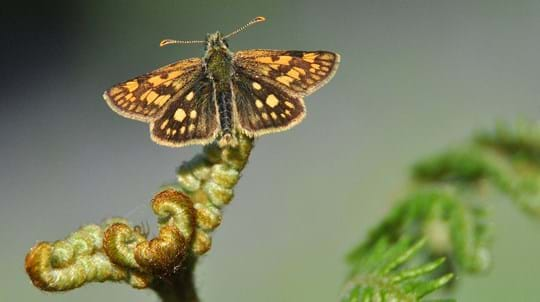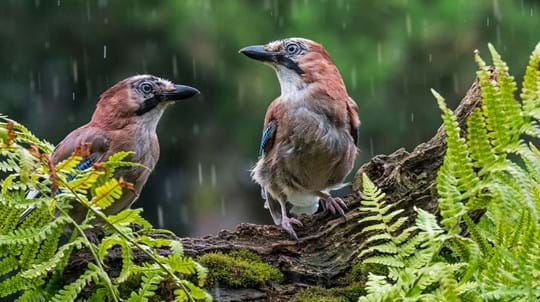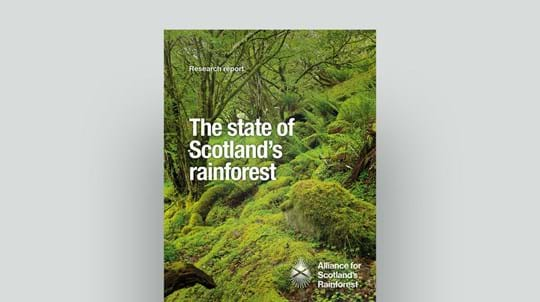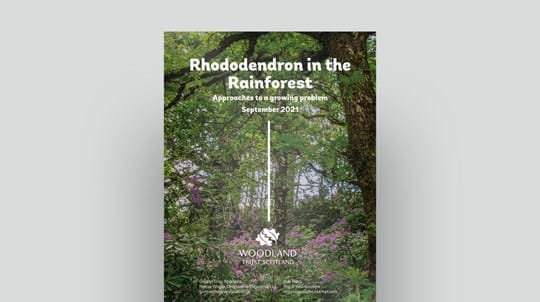
Inside Britain's rainforests
00:03:47
Take a glimpse into Britain's beautiful and fragile temperate rainforests and discover more about the rare and globally important species that live there.
Watch the filmAlso known as Atlantic or Celtic rainforest, this special habitat is incredibly rare. In fact, it's thought to be more threatened than tropical rainforest. Its lush conditions are perfect for scarce plants, lichens and fungi, as well as remarkable birds and mammals.
The climatic conditions required to form rainforest occur over less than 1% of the planet.
Otherwise known as Atlantic woodland, temperate rainforest is found in areas subject to the influence of the sea (places with 'high oceanicity'). These places have high rainfall and humidity and a low annual variation in temperature.
This unique habitat of ancient oak, birch, ash, pine and hazel woodland is made even more diverse by open glades, boulders, crags, ravines and river gorges.
Rainforests in the UK are part of the Coastal Temperate Rainforest biome. This habitat is globally rare and some say is more threatened than tropical rainforest. The green areas on the map below show just how rare it is.
Ideal conditions for temperate rainforest are found along the UK's western seaboard, including:
Even within the UK, the location of this kind of woodland can influence the condition and species present at each rainforest site. The biodiversity of rainforests in south west England for example differ markedly to those in north west Scotland.
*Maphobbyist, Temperate rainforest map, CC BY-SA 3.0

00:03:47
Take a glimpse into Britain's beautiful and fragile temperate rainforests and discover more about the rare and globally important species that live there.
Watch the filmExperience Britain's rainforest for yourself. We care for special rainforest sites across the UK, all free for you to explore and enjoy.
The richness of lichens in these parts of the UK is partly because the western extremities have been least affected by air pollution historically. Tree lungwort would once have occurred all across western Europe.
Rainforests are one of the most biodiverse habitats in the UK. The high humidity and low temperature range create the perfect conditions for moisture-loving lichens and bryophytes (mosses and liverworts).
A good example of this habitat could contain over 200 different species of bryophytes and 100-200 species of lichen. The UK has an international responsibility to protect many of these species due to their scarce global distribution.

Credit: Alastair Hotchkiss / WTML
Temperate rainforests are particularly good for Lobarion and Graphidion lichens. Probably the most recognisable is tree lungwort (Lobaria pulmonaria) which is a large, leafy lichen. It literally looks like the lungs of the forest. Then there's the rare ‘blackberries-in-custard’ lichen (Pyrenula hibernica, pictured), a ‘crustose’ lichen which presses tight to the smooth bark of trees like hazel, and characteristically splits the bark.

Credit: Jan Hamilton / Lorn Natural History Group
Temperate rainforests are rich in fungi. Some are not just rare in the UK, but are globally scarce. Hazel gloves fungus (Hypocreopsis rhododendri) is a conservation priority species that almost exclusively grows on old hazel trees. It's a sure sign of clean air and a wood's ancient origins.

Credit: Andy Sands / naturepl.com
Migrant birds such as pied flycatcher, wood warbler, redstart and tree pipit thrive in the insect-rich conditions temperate rainforests offer, flying here to breed each summer. In the UK, the rare chequered skipper butterfly is also only found in the mild, damp and grassy habitats at the woodland edges of rainforest in western Scotland.
The rainforest was once a well-used resource, providing timber, charcoal and tannin for tanning leather. But our rainforest is threatened. It has suffered long term declines through clearances, chronic overgrazing, and conversion to other uses. This has left a small and fragmented resource.
The major threats continuing to impact our rainforests are:
Rhododendron (specifically Rhododendron ponticum and associated hybrids) has been called ‘the most damaging and most widespread non-native terrestrial plant in Britain’. Introduced to the UK around 1760, it’s an aggressive coloniser that reduces the biodiversity value of a site. It obstructs the regeneration of woodlands and once established, it’s difficult and costly to eradicate.
The small and fragmented nature of our rainforest also reduces its resilience against other threats, such as pests, diseases and climate change.
Time is running out for our precious rainforests. We must act now before it’s too late.
To ensure a secure future for this rare habitat, long-term management is essential. We've already achieved so much at the woods we own and care for in the west coast rainforest zone, but there is still a great deal more to do.
Please support our Rainforest Appeal. Our work to protect the UK’s temperate rainforests is just one example of the vital conservation work we are doing every day to protect, enhance and restore the UK’s native woodland for the benefit of wildlife and people. Your donation will be used where it is most needed. Thank you.

Help support our vital conservation work to protect our vanishingly rare woodland habitats before we lose them forever.
Please helpFind out how we're giving fragile habitats a future.

About us
We're working to ensure Scotland’s rainforests thrive once again. As part of the Alliance for Scotland’s Rainforest, we're on a mission to protect and enhance this globally important habitat for the special wildlife that depends upon it.

Video
00:03:47

Listen to our podcast from magical Bovey Valley Woods to learn all about UK rainforest, its fantastic wildlife, why this habitat is so important and how we can protect it.
External link

Research report
PDF (3.86 MB)

Policy paper
PDF (7.41 MB)